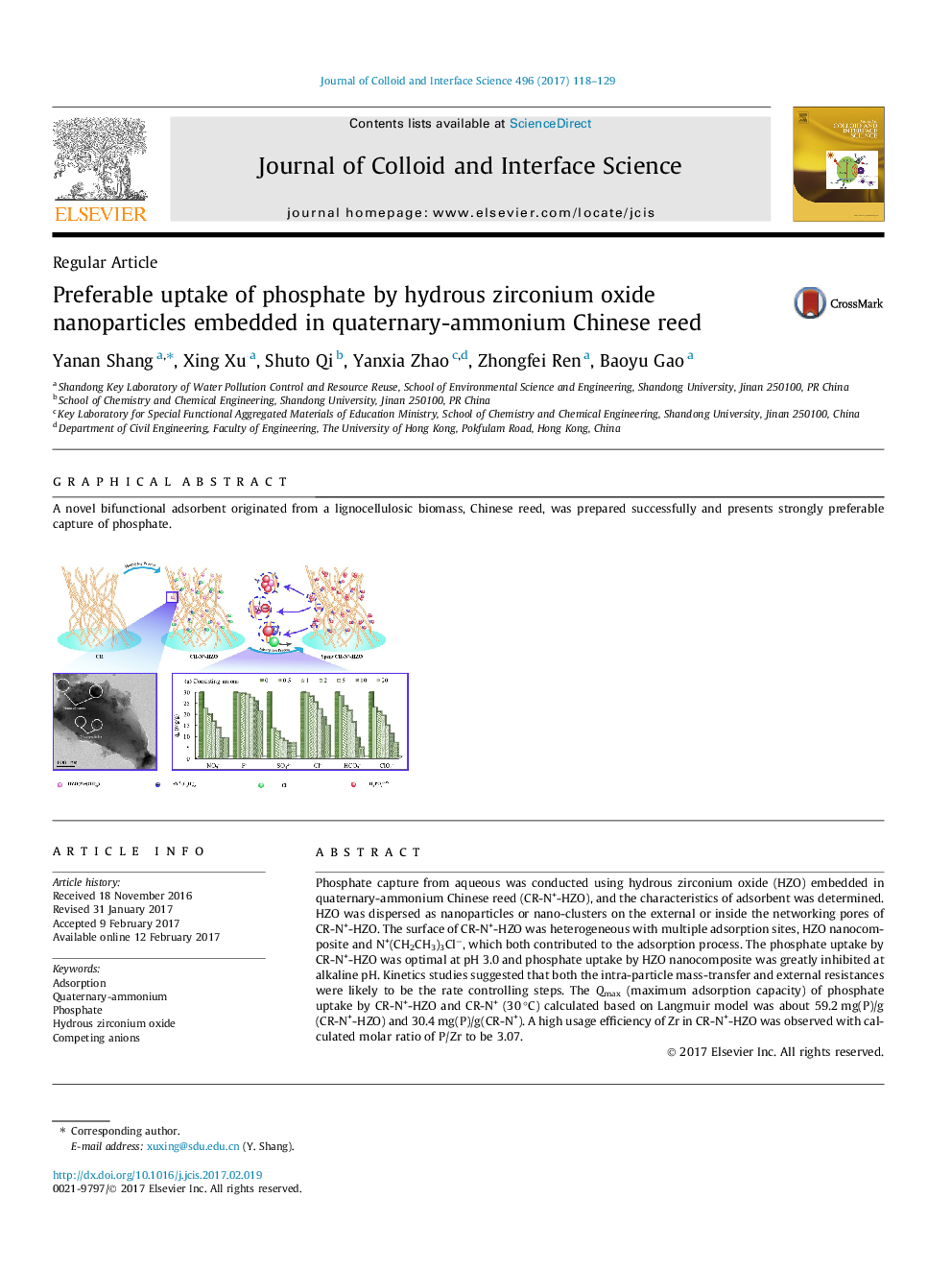| Article ID | Journal | Published Year | Pages | File Type |
|---|---|---|---|---|
| 4985081 | Journal of Colloid and Interface Science | 2017 | 12 Pages |
Phosphate capture from aqueous was conducted using hydrous zirconium oxide (HZO) embedded in quaternary-ammonium Chinese reed (CR-N+-HZO), and the characteristics of adsorbent was determined. HZO was dispersed as nanoparticles or nano-clusters on the external or inside the networking pores of CR-N+-HZO. The surface of CR-N+-HZO was heterogeneous with multiple adsorption sites, HZO nanocomposite and N+(CH2CH3)3Clâ, which both contributed to the adsorption process. The phosphate uptake by CR-N+-HZO was optimal at pH 3.0 and phosphate uptake by HZO nanocomposite was greatly inhibited at alkaline pH. Kinetics studies suggested that both the intra-particle mass-transfer and external resistances were likely to be the rate controlling steps. The Qmax (maximum adsorption capacity) of phosphate uptake by CR-N+-HZO and CR-N+ (30 °C) calculated based on Langmuir model was about 59.2 mg(P)/g(CR-N+-HZO) and 30.4 mg(P)/g(CR-N+). A high usage efficiency of Zr in CR-N+-HZO was observed with calculated molar ratio of P/Zr to be 3.07.
Graphical abstractA novel bifunctional adsorbent originated from a lignocellulosic biomass, Chinese reed, was prepared successfully and presents strongly preferable capture of phosphate.Download high-res image (258KB)Download full-size image
